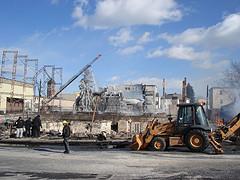 It's no secret that residents of the cities their country houses still prefer to build from solid wood. And it is not surprising, brick and concrete that surround us in the city, I want to leave and get out into the countryside. And what is the most eco-friendly building material? That's right, wood. Timber and round wood, paneling and plywood, veneer and board – are the main building and finishing materials in the country. Wood is not only "breathes" and pleases the eye but their natural pattern.
It's no secret that residents of the cities their country houses still prefer to build from solid wood. And it is not surprising, brick and concrete that surround us in the city, I want to leave and get out into the countryside. And what is the most eco-friendly building material? That's right, wood. Timber and round wood, paneling and plywood, veneer and board – are the main building and finishing materials in the country. Wood is not only "breathes" and pleases the eye but their natural pattern.
Everything is good, but … the tree has one major drawback: it is afraid of fire. And not just afraid, or happy and support this very fire, turning to coal and ash. "Where the fire?" – You ask. Gas or electric cooker, barbecue in the yard and the sparks flying in the wind, the closure of the wiring. Yes, and you never know what's over … Yes, in this age are rarely in one house you will not find a fire extinguisher.
But that triggered a fire extinguisher, you need to fire not only noticed time, and thereby to have a fire extinguisher and skillfully used. But, as we have seen, except for fire extinguisher is another, more reliable way to keep the property. As we discovered in our time, there are special chemical compounds (so-called "flame retardants"), do not allow the wood to burn. This can be a colorless impregnation, which makes the wood nonflammable and transparent clearcoat, as well as special paint. Let's try understand how what and where best to use. Retardants "impregnation." Some chemicals, so-called "salt" does not allow the wood to burn. And not just a tree, of course, but also paper, textiles, carpeting and much more. After during the war, many urban homes burned to the ground not only because they were treated with specific compounds.